Weeds always appear in every garden, and they are usually a great inconvenience because weeds take away nutrients and space from other plants that you want in your garden. But sticker weeds also tend to appear in gardens, which are a nuisance because stepping on them barefoot hurts a lot. This article summarizes more about the types of sticker weeds.
Table of Contents
What Are Sticker Weeds
What Are Sticker Weeds? Sticker weeds are plants with spines or sharp spines that easily adhere to pets’ clothing and bodies. Sticky weeds are not toxic, but stepping barefoot on one of these spines will cause significant pain, and they are plants that compete for nutrients with other plants in the garden.
This type of sticker weed develops easily in almost any type of soil, but prefers moist, grassy soils for its development. In the next paragraphs, we will explain how to get rid of stickers weeds in yard.
What Do Sticker Weeds Look Like
What Do Sticker Weeds Look Like? Sticker weeds are not difficult to identify, they have several characteristics that make them easy to identify. These weeds have bright green leaves with a lobed shape. Some types of sticker weeds are very similar to parsley or have hairy leaves and easily visible spines.
Sticky weeds do not grow very tall, these weeds grow to the sides and quickly populate all areas. The flowers of the sticker weeds then turn into seeds, which are the ones that contain the annoying spines.
The seeds have a very hard coating and sharp spines, so stepping barefoot on the grass if you have weeds with stickers in your garden you will notice them quickly. Here are some images of weeds with stickers to make it easier to identify them.
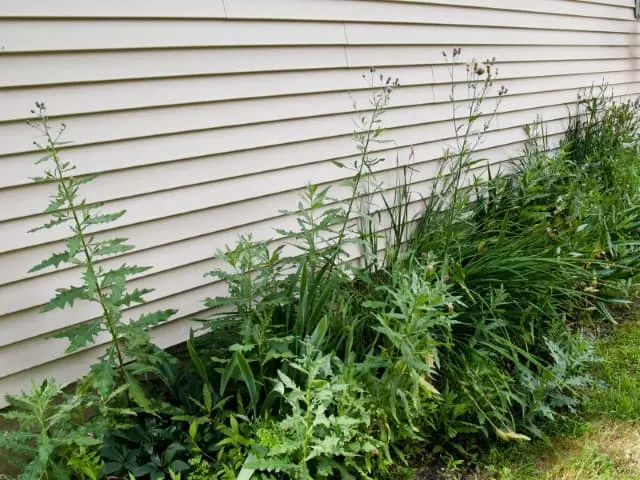
Types Of Sticker Weeds
There are many types of sticker weeds, below I will describe the most common species of sticker weeds that appear in the garden. If you find another type of sticker weeds in your garden, and you cannot identify these weeds with stickers, do not hesitate to send us a picture to help you identify these weeds with stickers.
Caltrop (Tribulus terrestris)
Tribulus terrestris, also known as Caltrop, is a species of herbaceous plant of the family Zygophyllaceae and class Magnoliopsida. In the fields of Australia, United States, China, Pakistan, India, Sudan, as well as in other parts of Asia and Southern Europe, creeping shrubs with yellow flowers and thorny fruits can grow, this is the Tribulus terrestris.
Caltrop has semi-woody branches and does not grow very tall; it is a low-growing plant. This type of sticker weed is toxic to livestock if consumed in large quantities. It is best to remove the Caltrop plant completely to prevent it from spreading easily throughout the garden.
Tribulus terrestris has been used for many years in medicine. In an article from the University of Romania, you can learn more about Tribulus terrestris.
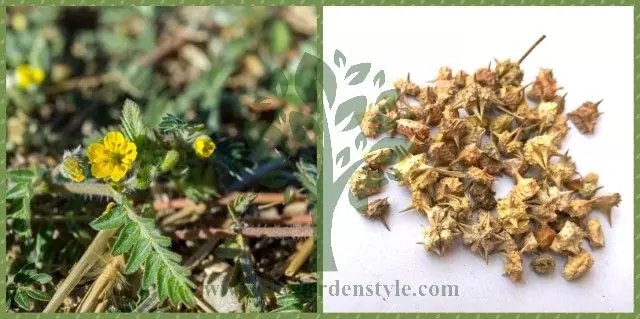
Burr Medic (Medicago polymorpha)
Burr Medic is a type of sticker weeds that grows along roadsides, in agricultural fields, and home gardens. This weed has very small yellow flowers that grow in clusters of 3 to 8 flowers.
Native to the Mediterranean basin. Its cultivation is widespread in various countries with Mediterranean climates such as Australia, Argentina, Chile, Uruguay, USA. Medicago polymorpha adapts very well to drought but does not tolerate very cold weather or frost.
Burr medic spreads rapidly if not controlled. It is best to eliminate the plant completely by removing it from the root. Seed pods adhere easily to animals and clothing.
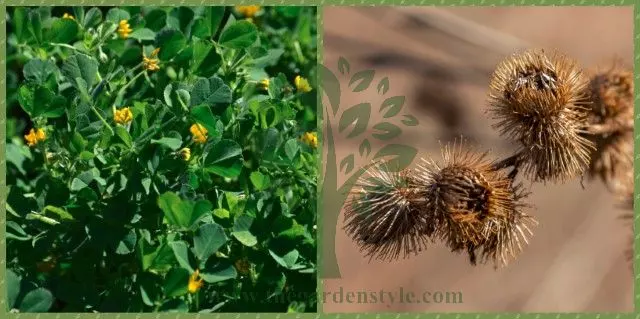
Lawn Burweed (Soliva sessilis)
Lawn burweed, scientifically called Soliva sessilis, is a wild, herbaceous, annual, low-growing plant native to South America (where it can be found up to 4900 ft (1,500 meters) above sea level); it belongs to the Asteraceae family.
Due to its prostrate pubescent stems (often mottled red or entirely dark) it does not exceed 2.7” (7 cm) in height and occupies a space of about 10” (25 cm) in diameter.
Soliva sessilis has pinnate leaves, with two to eight lanceolate leaflets arranged in a palmate shape, which give it a feathery appearance; they are similar to those of parsley, although smaller. Soliva sessilis is very resistant to certain types of herbicides, which makes its elimination more difficult.
At present, it has spread throughout most of the planet and is considered highly invasive, but it is not difficult to eliminate both manually (pulling it up by the roots, protecting oneself with thick gloves) and with mechanical and chemical means (herbicides, which are not recommended because they run off into the water table and seriously contaminate it).
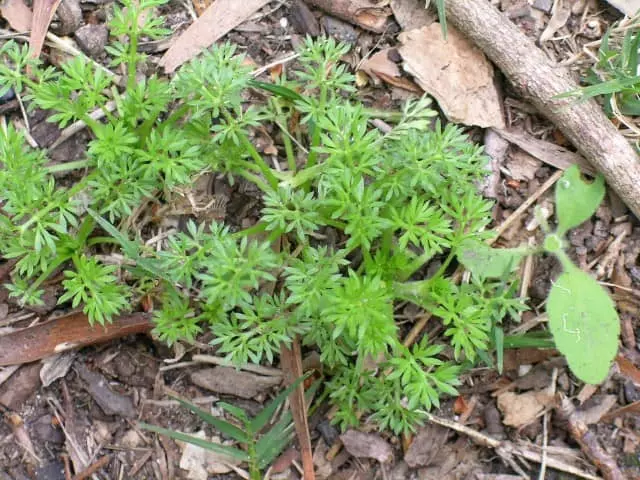
Sandbur (Cenchrus)
Sandbur belongs to the genus Cenchrus, this genus has about 25 different species of grasses. This type of grass is usually used as forage for livestock when it is a young grass, when mature these grasses produce fruits with spines that adhere to the skin of the animals.
These weeds with stickers grow up to 40” (100 cm) in almost all temperate zones of the planet. Sandur is also known as sand spur or buffelgrass. Once these grasses mature, they produce many spikes with spines that are very annoying to animals and humans.
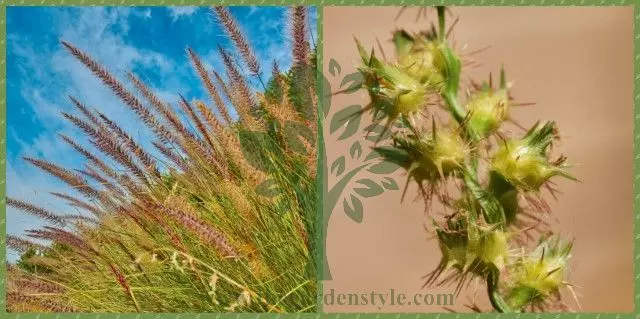
How To Get Rid of Stickers Weeds in Yard
There are many ways to get rid of stickers weeds yard, the easiest is to use herbicides, but it is not the most recommended because they tend to be highly toxic. Other more environmentally friendly and safer ways to remove weeds with stickers are available for you and your pets.
When the soil is a little moist, use gardening gloves to remove weeds with stickers. Remove the weeds with stickers by the roots to make sure they don’t grow back. This is a way to remove sticky weeds only if you have few in your garden.
Alternatively, you can also use white vinegar to get rid of weeds with stickers. In a spray bottle place white vinegar and apply it only on the weeds with stickers because the vinegar will kill any type of plant. Carefully apply only on sticker weeds.
Applying salt directly to weeds with stickers is also possible, but you should only apply the salt to the plant you want to remove. It is an effective method but if you have grass nearby the salt may damage the grass.
Finally, if manual or natural methods are not efficient to eliminate weeds with stickers from your garden, you should use a herbicide for weeds. Sometimes there are many weeds with stickers, and it is difficult to use a natural or manual method. It also happens that if there are many other plants near the weeds with stickers, it is not possible to apply salt or vinegar because this would kill all the plants. Always follow the herbicide manufacturer’s instructions.
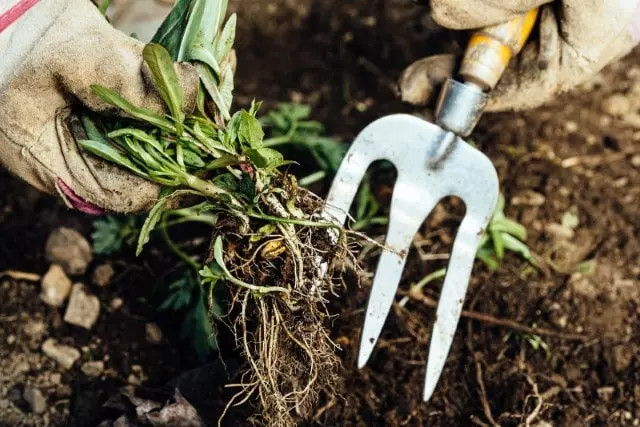
Final Conclusions
Removing sticky weeds as soon as possible before they set seed is the best way to prevent them from spreading throughout the garden. I recommend trying natural methods to eliminate sticker weeds before using herbicides.
I hope this article about weeds with stickers will be useful for you to eliminate all those weeds in your garden with ease. Learn more about how to fertilize lawn. If you want to learn how to identify other types of weeds I recommend you read our article about weeds with purple flowers.
